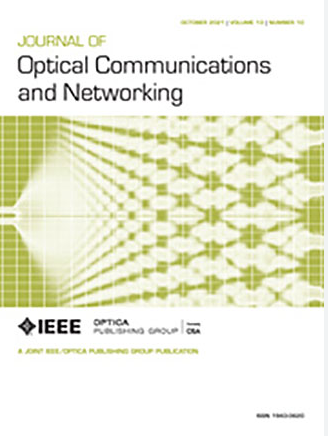Adaptive windowing-based concept drift detection and adaptation framework for human-to-machine applications over future communication networks
IF 4.3
2区 计算机科学
Q1 COMPUTER SCIENCE, HARDWARE & ARCHITECTURE
引用次数: 0
Abstract
Human-to-machine (H2M) applications in future networks have strict low-latency transmission requirements. Thanks to the assistance of machine learning (ML) in future communication networks, ML-enhanced dynamic bandwidth allocation (DBA) schemes have been proposed to effectively reduce uplink latency in H2M applications. Existing methods generally assume that the H2M application traffic stream is stationary, thereby primarily designing an ML model based on a specific H2M application and fixed traffic load. However, future communication networks are expected to support dynamic and heterogeneous H2M applications. As such, incoming H2M data traffic from networks will change over time as different H2M applications have distinct traffic distributions, causing the concept drift in H2M applications. Meanwhile, another challenge in detecting the concept drift of H2M applications is detecting traffic distribution change in dynamic network environments among similar H2M application scenarios, which leads to an incremental drift of H2M application traffic. To tackle the above challenges, we propose an adaptive windowing-based concept drift detection and adaptation (ADA) framework to support H2M applications in dynamic and heterogeneous networks. Unlike existing solutions that mainly use fixed sliding windows, the proposed ADA dynamically changes the sliding window size based on the drift detection results. Hoeffding’s inequality-based drift detection algorithm is employed in ADA to effectively detect incremental H2M application traffic drift in a dynamic network. Comprehensive simulation investigations show that ADA can enhance DBA performance in terms of uplink latency reduction and rapidly responding and adapting to the concept drift in changing H2M applications and traffic load scenarios of 96.51% drift detection efficiency improvement, and over 50% packet delay reduction in model adaptation compared to frameworks are considered.基于自适应窗口的概念漂移检测和自适应框架,用于未来通信网络的人机应用
未来网络中的H2M (Human-to-machine)应用对低时延传输有着严格的要求。由于机器学习(ML)在未来通信网络中的辅助作用,人们提出了增强机器学习的动态带宽分配(DBA)方案,以有效降低H2M应用中的上行延迟。现有方法一般假设H2M应用流量流是固定的,主要是基于特定的H2M应用和固定的流量负载来设计ML模型。然而,未来的通信网络有望支持动态和异构的H2M应用。因此,来自网络的传入H2M数据流量会随着时间的推移而变化,因为不同的H2M应用具有不同的流量分布,从而导致H2M应用中的概念漂移。同时,检测H2M应用概念漂移的另一个挑战是检测动态网络环境中类似H2M应用场景之间的流量分布变化,从而导致H2M应用流量增量漂移。为了解决上述挑战,我们提出了一种基于自适应窗口的概念漂移检测和自适应(ADA)框架,以支持动态和异构网络中的H2M应用。与现有的主要使用固定滑动窗口的解决方案不同,本文提出的ADA根据漂移检测结果动态改变滑动窗口的大小。ADA采用Hoeffding基于不等式的漂移检测算法,有效检测动态网络中H2M应用流量的增量漂移。综合仿真研究表明,在不断变化的H2M应用和流量负载场景下,ADA可以提高DBA在降低上行时延和快速响应和适应概念漂移方面的性能,漂移检测效率比框架提高96.51%,模型自适应数据包延迟比框架降低50%以上。
本文章由计算机程序翻译,如有差异,请以英文原文为准。
求助全文
约1分钟内获得全文
求助全文
来源期刊
CiteScore
9.40
自引率
16.00%
发文量
104
审稿时长
4 months
期刊介绍:
The scope of the Journal includes advances in the state-of-the-art of optical networking science, technology, and engineering. Both theoretical contributions (including new techniques, concepts, analyses, and economic studies) and practical contributions (including optical networking experiments, prototypes, and new applications) are encouraged. Subareas of interest include the architecture and design of optical networks, optical network survivability and security, software-defined optical networking, elastic optical networks, data and control plane advances, network management related innovation, and optical access networks. Enabling technologies and their applications are suitable topics only if the results are shown to directly impact optical networking beyond simple point-to-point networks.

 求助内容:
求助内容: 应助结果提醒方式:
应助结果提醒方式:


